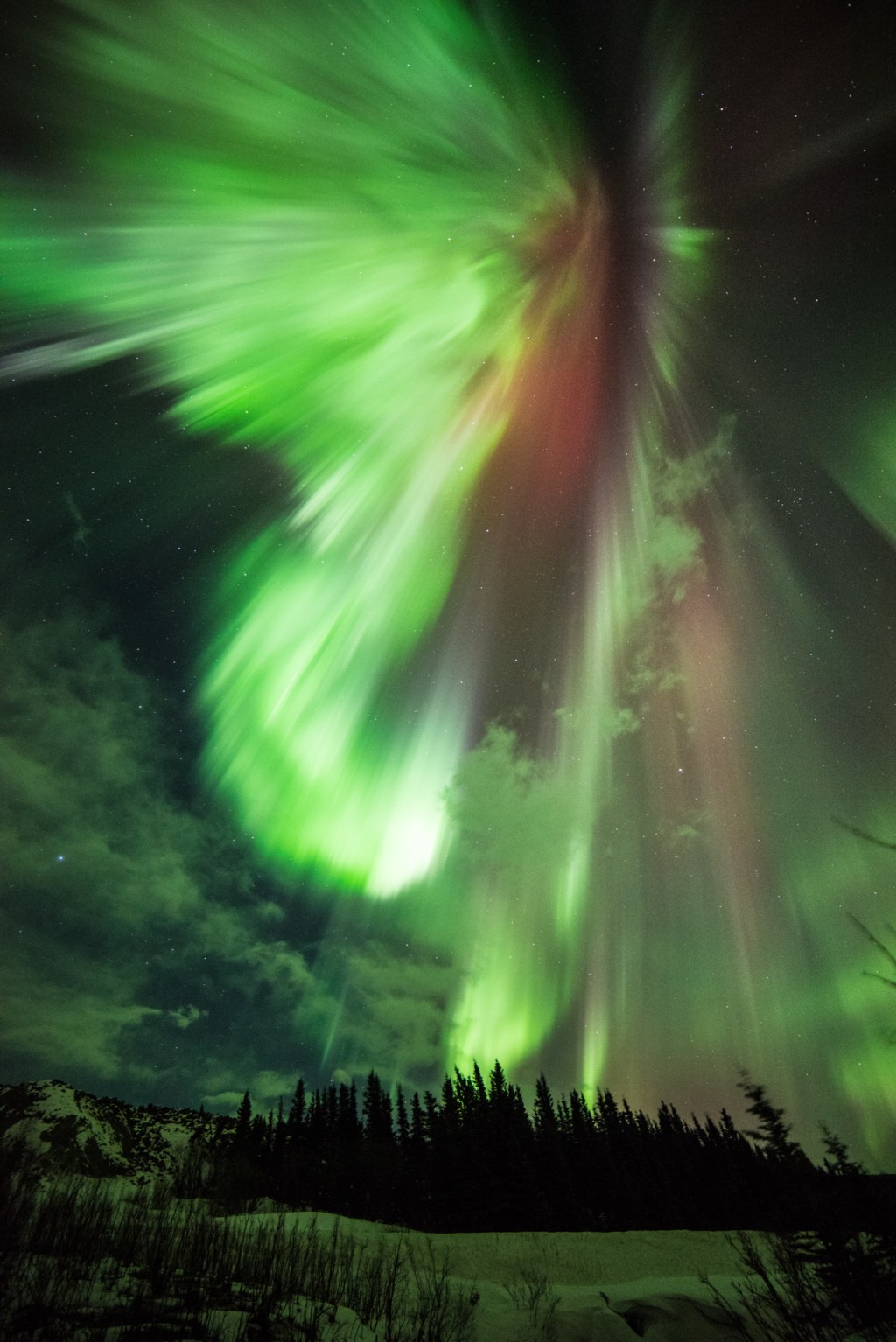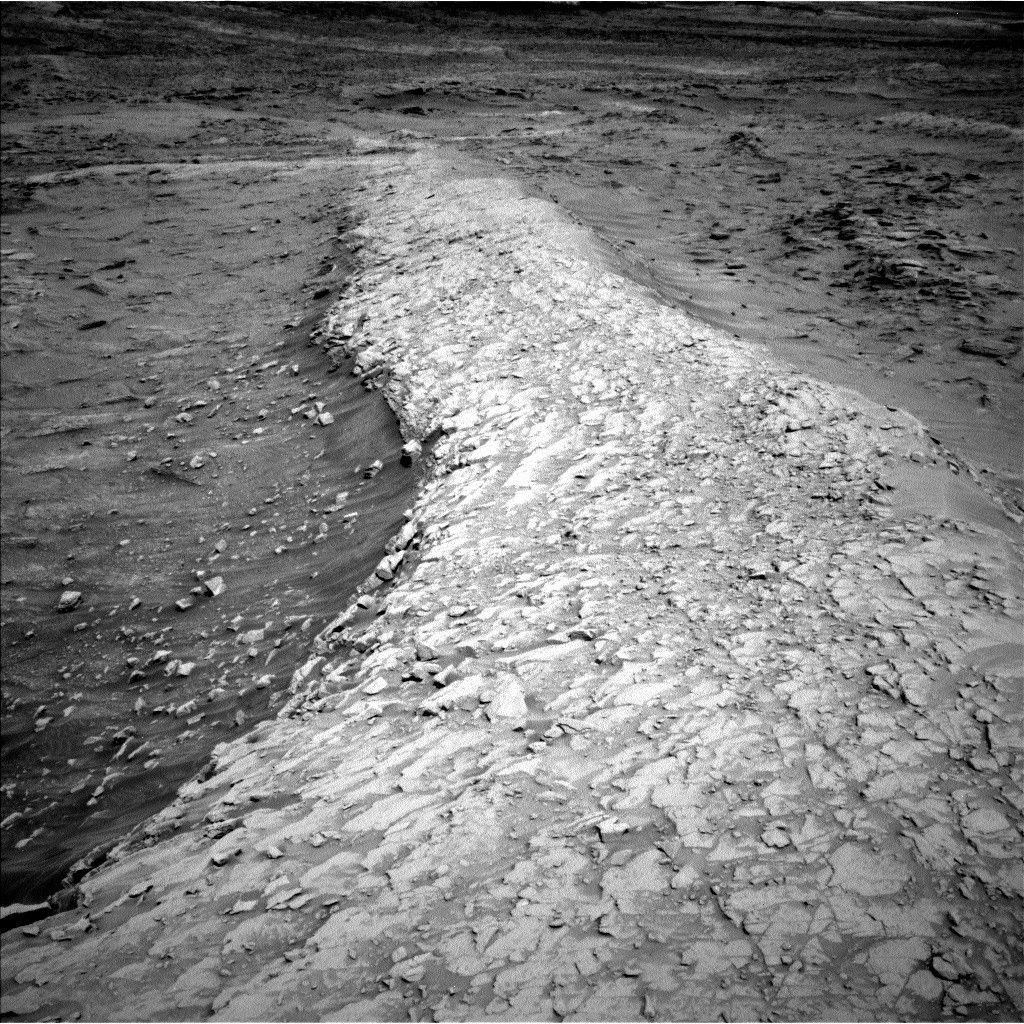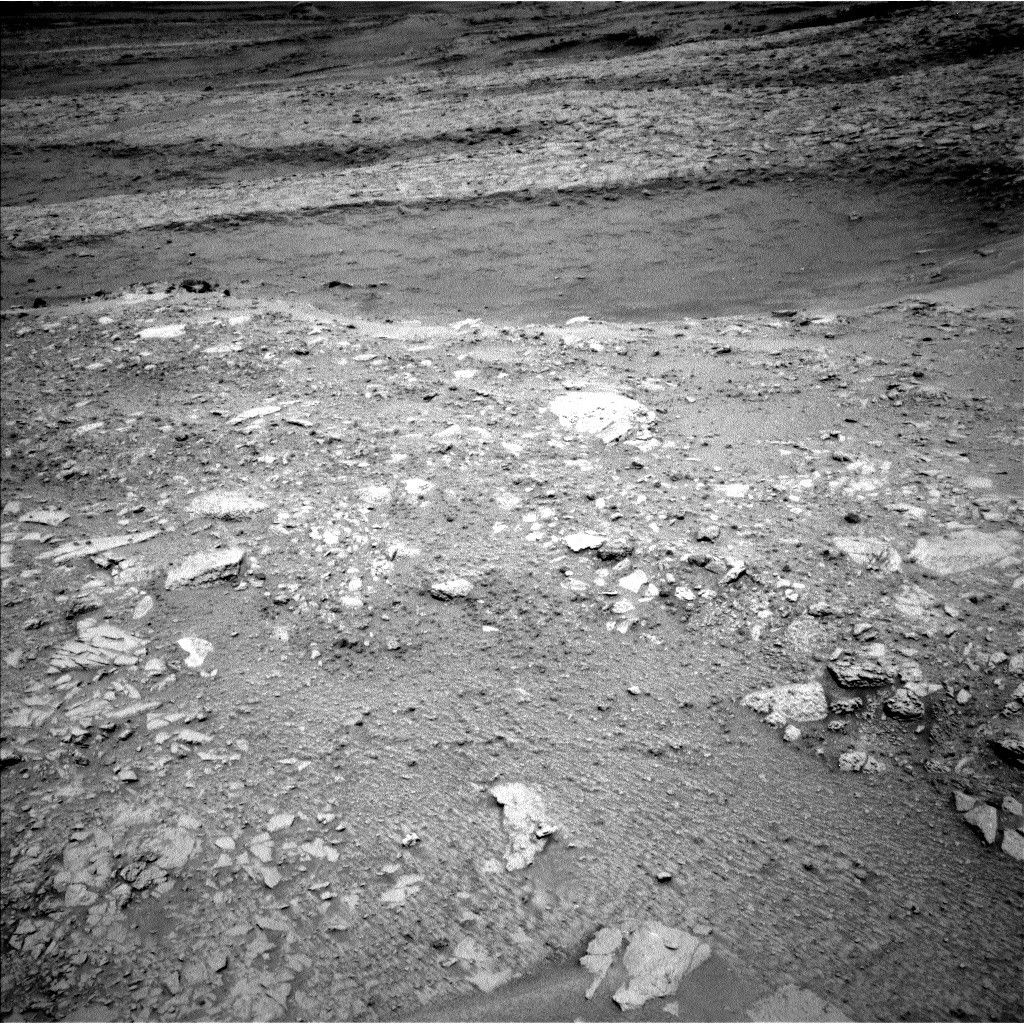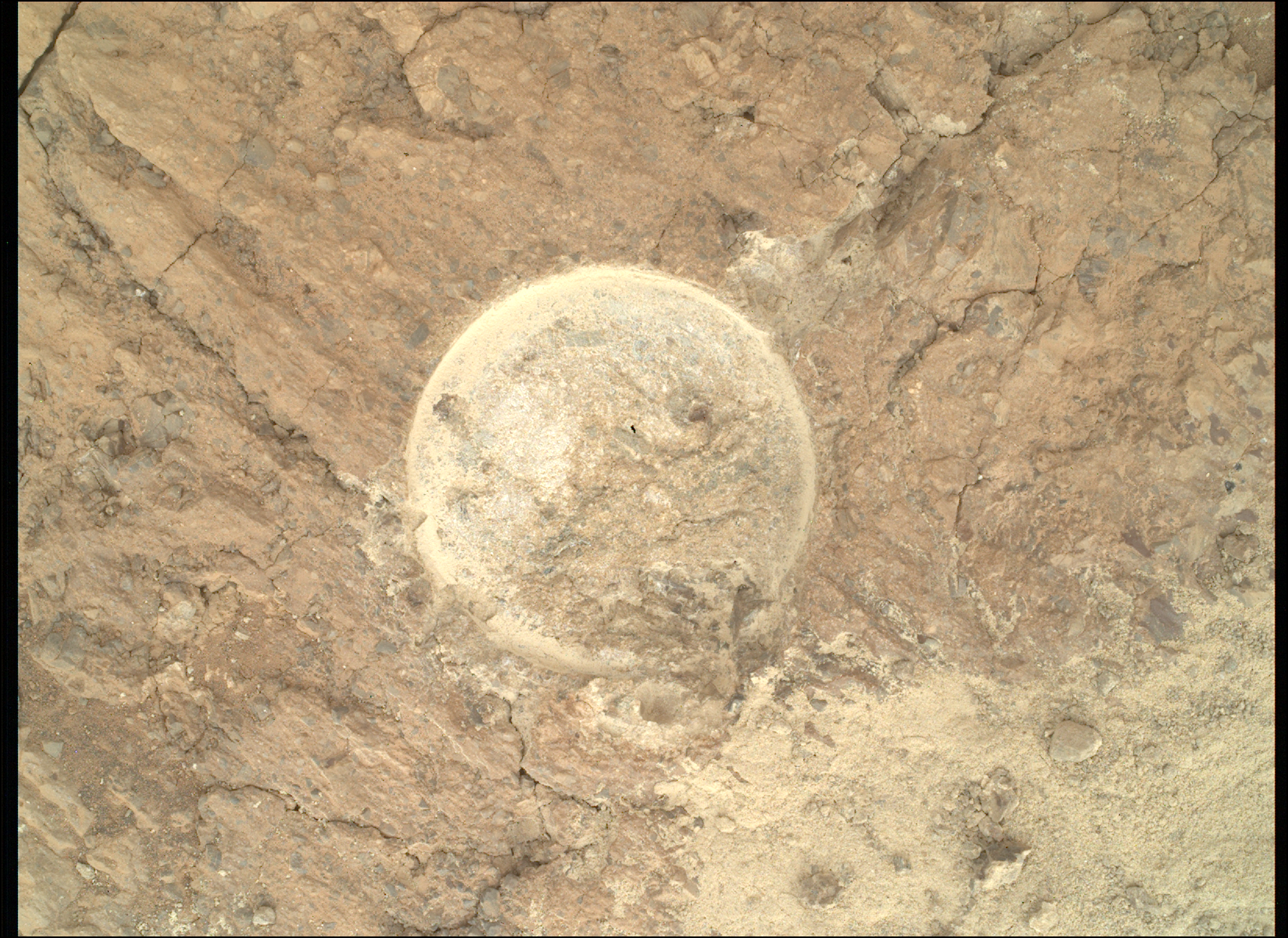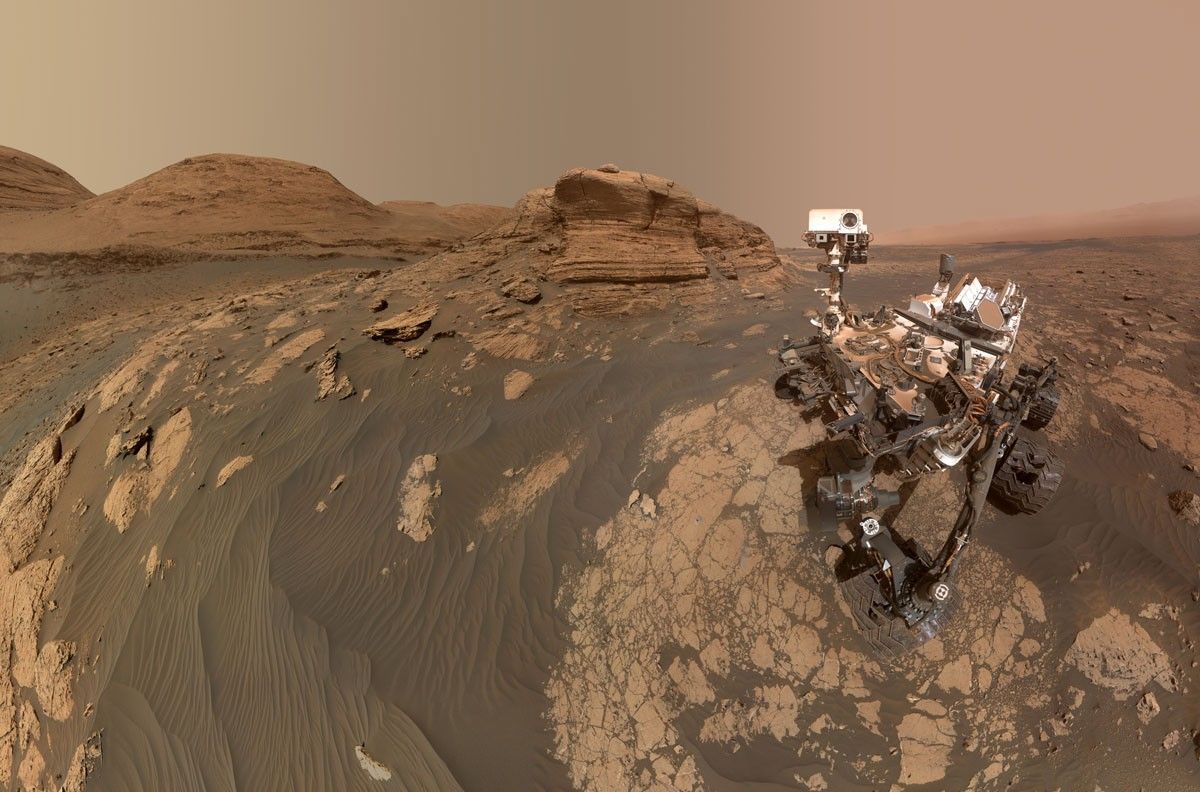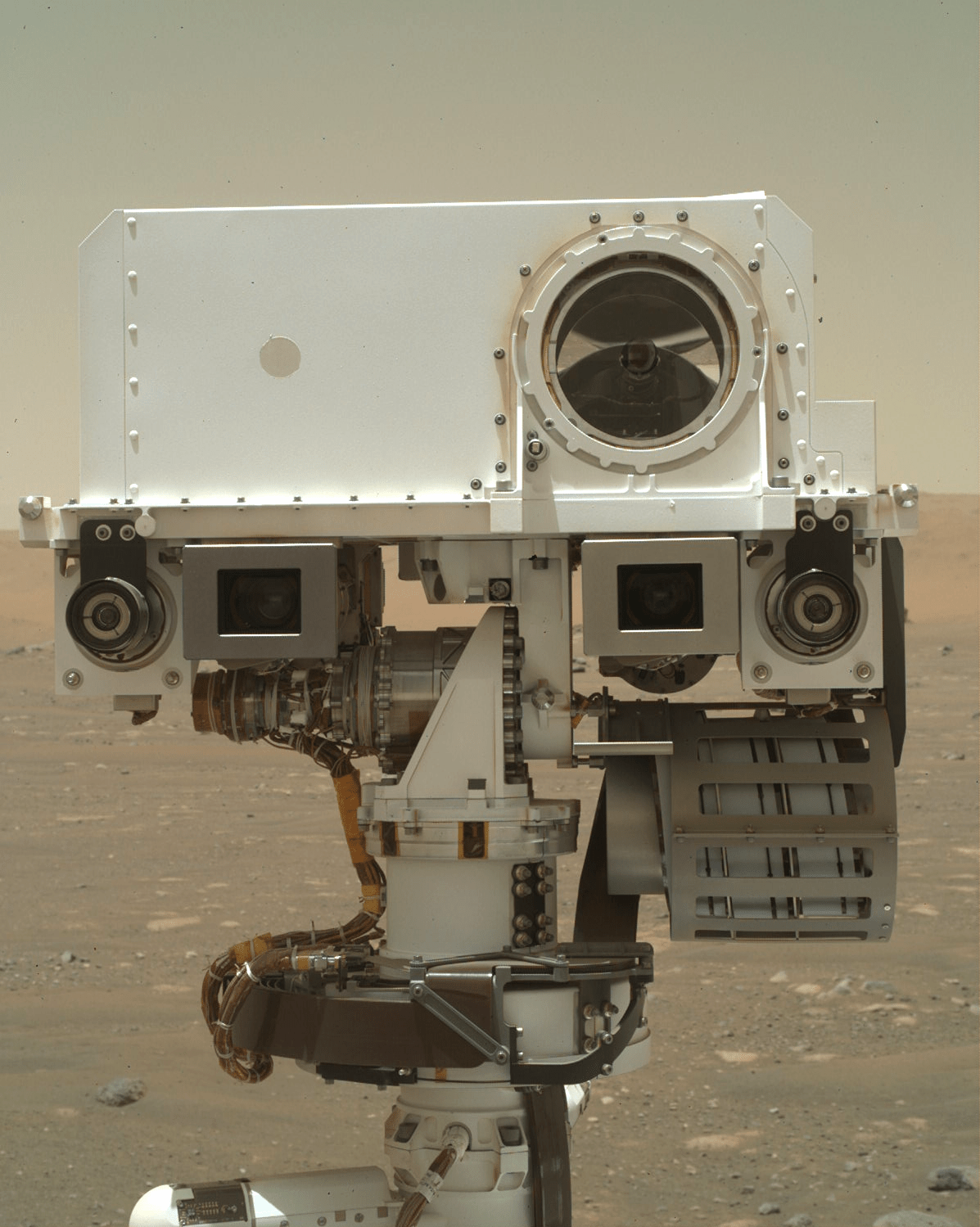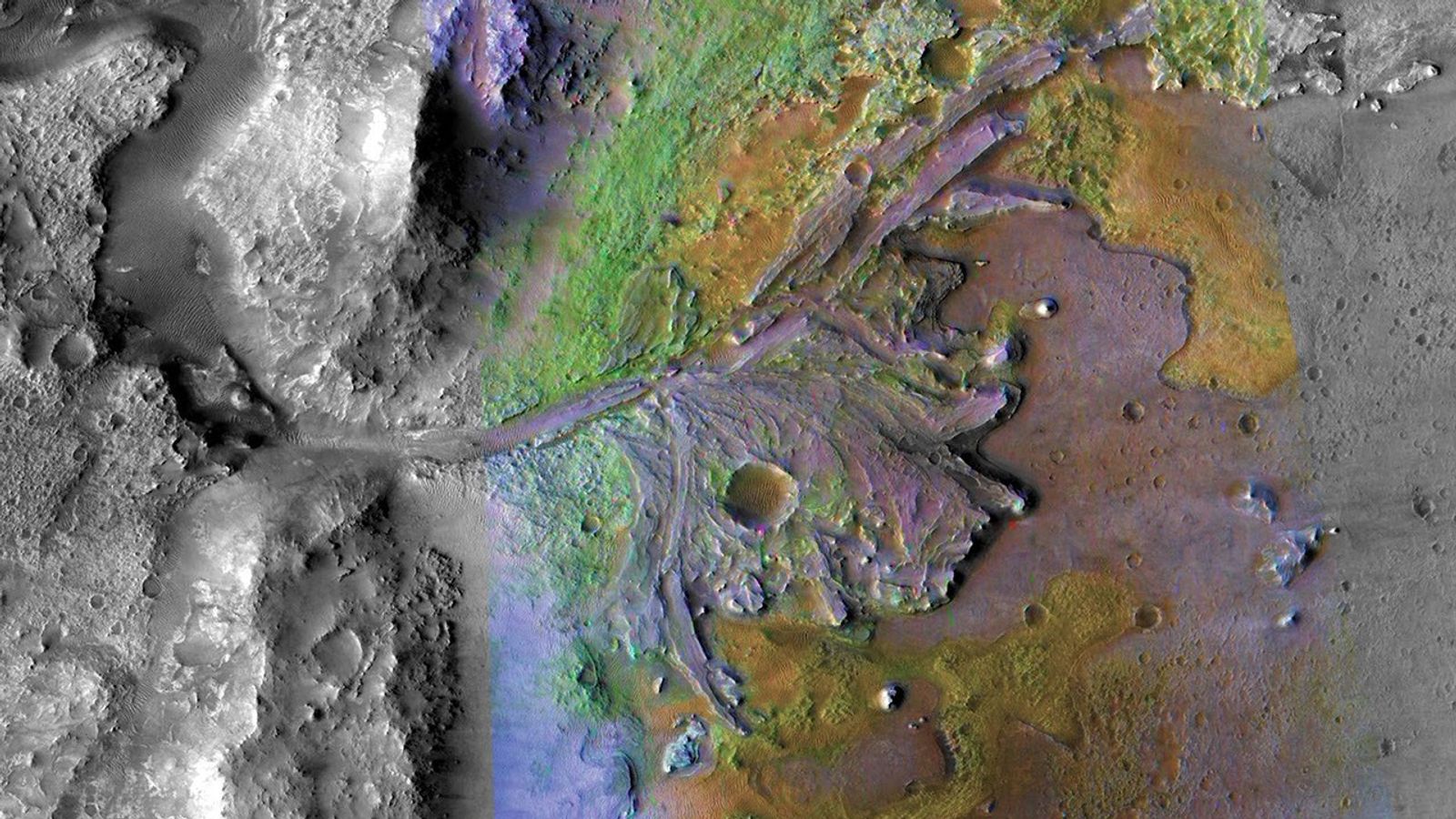Following a successful weekend of science activities at the "Highfield" drill site, today we're planning Sols 2229-2230. We're eagerly awaiting data from CheMin, which will tell us all about the mineralogy of our newest drill hole sample. We're equally as eager to get a Highfield drill sample to the SAM instrument for analysis. To prepare for SAM, on Sol 2229 we'll perform a preconditioning activity to get the instrument ready to receive and analyze sample. Although SAM is located inside the belly of Curiosity, we can see the instrument's inlet covers in the image above, which was taken by Mastcam late last week.
While the SAM preconditioning activity takes up the bulk of Sol 2229's power, we were still able to plan about four hours' worth of science activities! Today was my first Mastcam PUL shift since the anomaly, so I was very excited to see so many fantastic observations make it into today's two-sol plan.
We'll kick off Sol 2229 with a hefty 2 hour-long science block. In it, we'll analyze 4 targets with ChemCam: one down the inside of the Highfield drill hole, another along the drill tailings at the surface, a third on a nearby vein called "Fraser Castle," and a fourth on bedrock target "Flanders Moss." After that, we'll take Mastcam images of each ChemCam target to confirm where the laser shots hit. We'll also image targets "Sand Loch" and "Windyedge" with Mastcam. This pair of images is important for change detection purposes, which we frequently perform when the rover is sitting in the same location for more than a few sols. For change detection, we take the same 2 images around the same time of day to help quantify how the martian wind is changing the landscape around us.
Finally, for Mastcam, we'll take a few multispectral images - these images are taken using multiple camera filters. Experts on the science team use these images to help us interpret the composition of the local bedrock and surrounding areas. We'll take multispectral images of two targets to the side of the rover, "Loch Ba" and "Slate Islands." To wrap up the science block, we'll take some images with Navcam to look for dust devils. Later in the evening, we'll perform our SAM preconditioning activity before going to sleep.
Curiosity will wake up on Sol 2230 for another loaded science block! This time, we'll use ChemCam to perform a passive calibration activity, followed by another Navcam dust devil suite and repeat Mastcam change detection images. We'll then use Mastcam to make additional atmospheric observations in the form of tau and crater rim extinction measurements. Later on in the late afternoon, we'll take a final pair of Mastcam change detection images and perform a sunset tau measurement.
It was a busy day for the Mastcam team with all of our exciting change detection, multispectral imaging, and atmospheric measurements. I'm very much looking forward to these data products, as well as updates later this week on the status of our Highfield drill sample!
Written by Rachel Kronyak, Planetary Geologist at NASA's Jet Propulsion Laboratory



















